Woodland creatures, backcountry skiers, and cozy book readers are all asking the same question: how will I stay warm this winter? Some of us may pack on the pounds or find an even puffier jacket, but most of our human adaptations to winter involve changing our behavior. Many Central Oregon creatures go through a whole host of behavior and biological changes to stay warm in the winter. Here are a few of our favorites: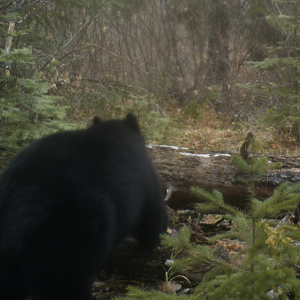
Like most other bear species, black bears try to build up their fat reserves in the late summer and fall so they can eventually stumble their lethargic bodies into a den where they wait out the cold winter months. During these times of gorging, black bears can eat upwards of 20,000 calories a day. Unlike true hibernating animals though, black bears can be roused from their slumber during the winter. It’s amazing to see the difference in rotundness between a late fall black bear and a bear that’s just emerging from its den in the spring!
Fragile Butterflies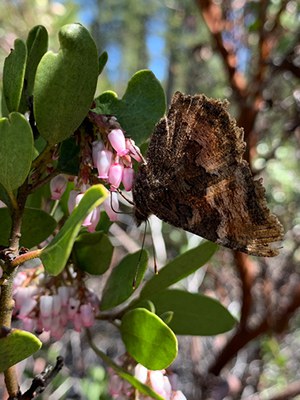
While some butterflies do migrate south to California and Mexico during the winter, some butterflies stick around during our more frigid times of the year. The pine white butterflies we see each summer at the Metolius Preserve, remain as eggs over the winter. Pale swallowtail butterflies will spend the winter in their chrysalis. But some brave butterflies, will spend the winter as adults! California tortoiseshells hibernating as adults in trees, woodpiles or other shelters all winter long. In the spring (or even on warm winter days!) they are one of first butterflies to emerge, flying their tattered bodies about to soak in the early spring sun. It’s always a delight to see these fluttering beauties with their spring-like pop of orange! 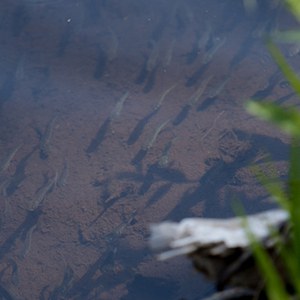
Some juvenile salmon and steelhead migrate from their spawning habitats to streams with lower water speeds and warmer temperatures over the winter. Like so many of us during these dark and cold days, fish are looking for refuge. Places with deep water and cover like side channels, ponds or wetlands are ideal winter hangouts for many of our favorite Central Oregon swimmers. Land trust properties protect a variety of habitat for young salmon and steelhead. Check out the work we've been doing to try to make more pools, healthy wetlands, and other habitat so important for fish throughout their life cycles.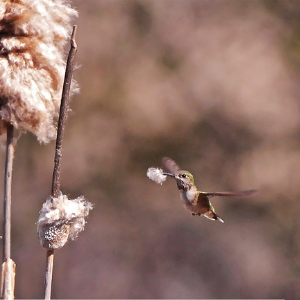
Unlike most other hummingbirds, Anna’s hummingbirds don’t migrate to warmer climates for winter. Though small, their tiny bodies generate some serious power. By eating lots of insects and nectar Anna’s hummingbirds are able to sustain themselves and even build up fat reserves for the more sparse months. Still, even with a bit of extra flub on their tiny little bones, these itty bitty birds have to be tough to make it through the winter. One thing they do to help is slow their metabolism each night, like a mini hibernation (kind of what I’d like to do when the sun sets at 4pm). To put this mini hibernation into perspective, hummingbird hearts usually beat about 1,200 times per minute. When they slow down at night, their hearts are beating just 50 times per minute which drops their body temperature to just above freezing!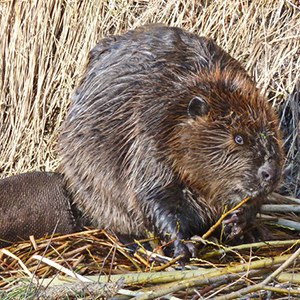
With their beavery cupboards full of twigs, bark, and other food to last them the whole winter, beaver will hole up in their lodges during the colder seasons. Their thick fur, historically treasured by humans for warm outerwear and especially fancy hats, not only keeps them warm but is coated in oil that also keeps them dry. A beaver’s life in the lodge sounds pretty cozy in the winter. Sometimes you can even see steam rising from the lodge, and scientists have recorded temperatures inside the beaver family home as much as 35 degrees warmer than the temperatures outside! As long as their food reserves remain, they’re fine to hang out in the lodge all winter long.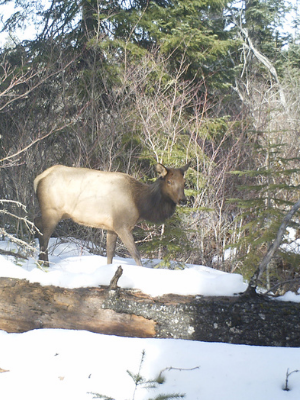
Like many of us when the temperatures start to drop below freezing, elk rely on a good winter coat. Though their coats may not be of the puffy persuasion, each year they shed their summer coat and put on thick woolly layers of fur to keep themselves much, much (as much as five times) warmer. This thick winter coat can even keep snow from melting on their backs. Elk also move about depending on the conditions of the day and the year. On cold dark and snowy days they’ll often hunker down beneath the cover of trees where the snow hasn’t reached the ground and the air stays a bit warmer. Finally, just like many Central Oregonians, you can be sure to find elk basking in the warm winter sun just as often as they can.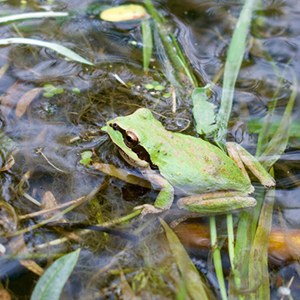
But what about some of our high desert hoppers? How do their slimy bodies survive the freezing cold? Must they hop along through the heaps of snow? To learn more about how they turn their bodies into little froggy icicles, or to discover how excellently some frogs can tunnel their cares away, you’ll need to read our blog post: Of Amphibians and Antifreeze.
Learn More:
- Amphibians in winter
- All About Black Bears
- Delicate butterflies in the harsh winter
- El Niño vs. La Niña: What you need to 'snow'
Sources: Rocky Mountain Elk Foundation, BirdNote, Ontario Parks


